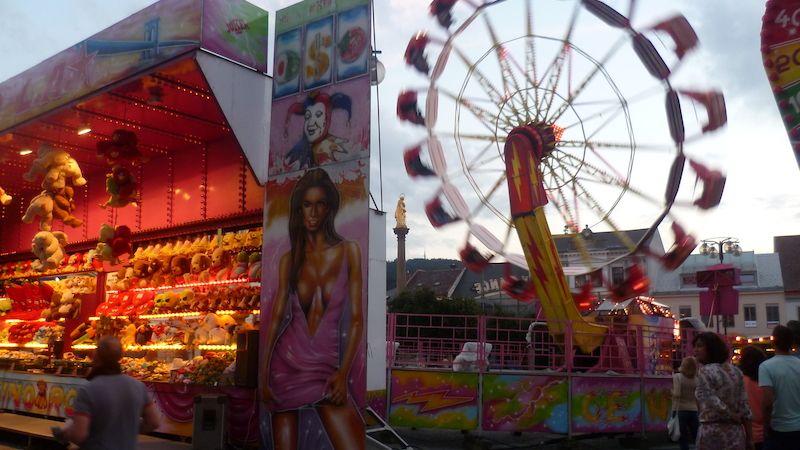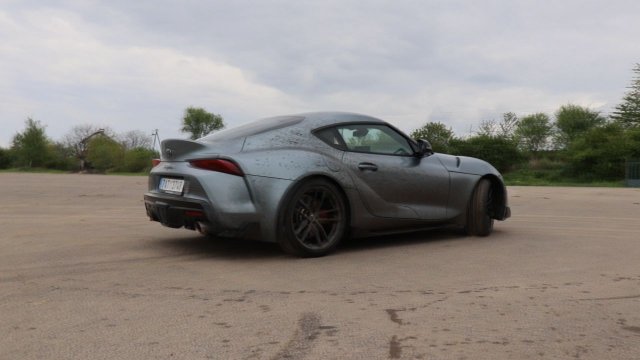With an area of about one hectare, Rabí is often referred to as one of the largest castle ruins in Bohemia. In Moravia, Helfštýn in the Olomouc Region is considered the most extensive and largest ruin, followed by Hukvaldy Castle in the Moravian-Silesian Region.
Maps, which can be seen in the castle area, show that initially only residential defensive towers (donjon) stood here, possibly before 1300. In the late 13th century, the ruler of Velhartice acquired the castle.
In the 14th century, the castle was further expanded by a parapet with the palace. The vihovsk family of Rýzmberk gave him such a form. As their family got richer, so did the castle.
The castle was besieged twice by the Hussites.
Photo: Tereza Havlíčková
The perimeter walls were created in the 14th century.
Photo: Tereza Havlíčková
During the reign of the Rýzmberks, several important events took place here, such as the double conquest of the Hussite castle. For that reason, new fortifications were built, and during the time of the Vihovsk Line, an artillery fort was also built.
It was a very expensive undertaking and left the owners in so much debt that they were forced to sell the land in the mid-16th century. Thus, the artillery fort was never completely finished. After the estate was sold, the owners changed hands, in 1954 the castle became state property, and in 1978 it was declared a national cultural monument.
Church is also interesting
As soon as we arrived at Rabí od Bojanovice, we saw an amazing sight, so we had built near the church of St. Bojanovice. John of Nepomuck. Previously, a Renaissance building stood here, and after its demolition, the church was built in the Baroque style. The entrance portal is dated 1611 and the interior from the early 18th century was abandoned from the original church.
The beautiful corner of the castle was not spared by the filmmakers.
Photo: Tereza Havlíčková
From the church we went to the ruins through the square and on the way we stopped at a nice castle shop with souvenirs. However, before we enter the main gate, we turn onto the path to the left. We will be interested in the chapel of the Holy Trinity, which is located very close to the castle.
This pre-castle church originally dates back to the 14th century. In the late 15th century, the above-mentioned Půta vihovsk of Rýzmberk had it rebuilt into a castle chapel, which also served as a defensive rampart. Since 1786, this building began to function again as a church, was rebuilt in 1907 and served as a parish church until 1970.
The local churches in the village are also interesting.
Photo: Tereza Havlíčková
Currently, only the church’s underground area is accessible in the summer months. Here we can find exhibition galleries and we can view them as part of one of the sightseeing tours. From the church, you can walk along the trails around the entire castle complex and explore it from all sides.
At the checkout they gave us a choice of three sightseeing tours. We chose the tower and took a tour of the large courtyard, where we could see, for example, the former stables, where some photos of the castle can be seen.
We proceed to the small courtyard, where there is a castle well and farm facilities with kitchen and fridge. We will walk through the oldest core of the castle and head to the top of the tower housing the Gothic donjon. Before climbing the wooden stairs, the female guide warned us about the height of the tower. Therefore, climbing is not entirely suitable for those who suffer from vertigo or fear of heights.
From the castle tower there is a very beautiful view of the surrounding area, so we can see the whole ruins from a completely different angle. The circuit ends in the basement, which we reach from a small courtyard. Here we can see old cannon balls or natural stalactite decorations.
The most beautiful view is in the chapel
We wanted to get a better view of the castle in all its beauty and from a distance, so we passed the former synagogue and Jewish cemetery along the dirt road to the hills of Líšná, about a kilometer away. The route leads through the forest and is clearly marked for tourists.
The year when the Chapel of All Saints was founded is unknown.
Photo: Tereza Havlíčková
The ruins of a small church stand on a hill, where we can read that the exact time of its construction is unknown. However, it may be related to Rabbi’s promotion to the city in 1499 by King Vladislav Jagiellon. As mentioned above, the Church of the Holy Trinity is part of the castle complex and serves only the nobility as a castle chapel. Therefore, it is necessary to build another.
Therefore, the church was probably built on a hill during the 15th and 16th centuries. It was first described in Jan Willenberg’s veduta in 1602 and was deconsecrated in the 1880s. However, it has since lost its importance to the residents of the city of Rab and has begun to slowly decay. Then the construction of the church of St. Jan Nepomuck, where our city tour begins.
The building was constructed of excavated stone and all the surrounding walls, which reach a height of four meters, have been preserved. The chapel has been a protected monument since 1958.
Líšná surrounded by legends
From the chapel we had an absolutely stunning view not only directly over the castle, but the entire city. After the hike, we can sit in the shade of the tourists and just enjoy. According to the abundance of diverse flora, it is clear that local flora thrives here, perhaps thanks to the limestone substrate.
However, what kind of magical place was without a legend. That is why there is a story, for example, of the monk Vintíř (11th century), who was supposed to build a hermitage in Líšná. The well closest to the healing water is also named after him.
The view from the chapel fascinates visitors.
Photo: Tereza Havlíčková
Another legend says that the chapel served the castle as a voice. And the talk of the devil is also not to be missed. Long ago, the Duke of Líšná lived here. He had a beautiful daughter, tpánka, who was loved by the son of the ruler Pračeň. There was even a wedding planned, but it didn’t happen. A strange guest in black came from far away, but no one recognized the demon in disguise. Their commander looked at těpánka and he fell under his spell.
As the bride’s father wished, the wedding will take place here, in a small church in Lišeň with a local hermit. However, the black king disagreed with this and the priestess wanted to bring her own. On the day of the celebration, the hermit saw the black groom and the black priest coming. He saw through hell and held up the holy cross in prayer. The devil begins to sink, but he drags his future with him. Since then, the devil’s hoof imprints have been left in the center of the church where the altar stands.
A hidden mine behind the castle
If we continue from the ruins of the All Saints chapel, we will reach a former limestone quarry, less than 800 meters from the site. The mines can also be reached from the road from Rabí to Sušice. There are also several places for parking.
Local mines have become popular with nudists.
Photo: Tereza Havlíčková
Mines have been used for limestone extraction and later for lime production since the Middle Ages. It was also used for castle needs. It had to be closed due to vibrations which damaged not only the statics of the castle, but also the nearby houses.
At the back is a concrete mill and the unused front has created an awesome pool. Today, limestone is processed in a quarry near Hejná. This vast mine cannot be ignored. We can also see it from the vantage point of the chapel.
The area around the former mine is accessible at your own risk. Still, it attracts tourists. The water is clean, clear and we can see some fish in it. It doesn’t just invite you to get wet on hot summer days. And as we learned from the locals, the quarry is famous here and it’s also an attraction for nudists. But if you’re lucky and don’t meet anyone here, this mine offers a really peaceful and pleasant place to relax.
Wed’s beautiful angles did not go unnoticed by the filmmakers. For example, historical films such as Markéta Lazarová or Božská Ema were filmed in a castle. However, she has also appeared in several fairy tales such as The Apple Maiden or The Forgetful Warlock.
Rabí Castle can be visited daily except Mondays from 9am to 5pm in high season.
| Free tourist navigation |
| On the go, with tourist navigation mapy.cz. This app is free and works even without signal. |

“Unapologetic social media guru. General reader. Incurable pop culture specialist.”







